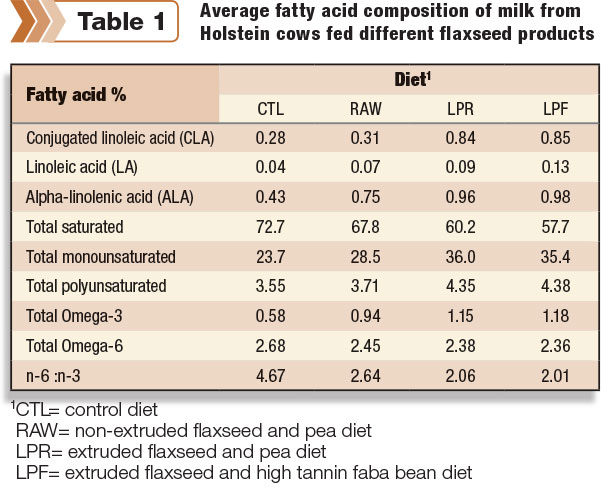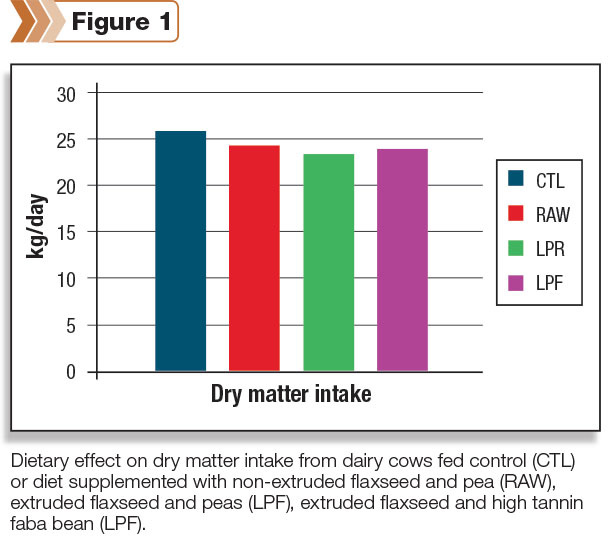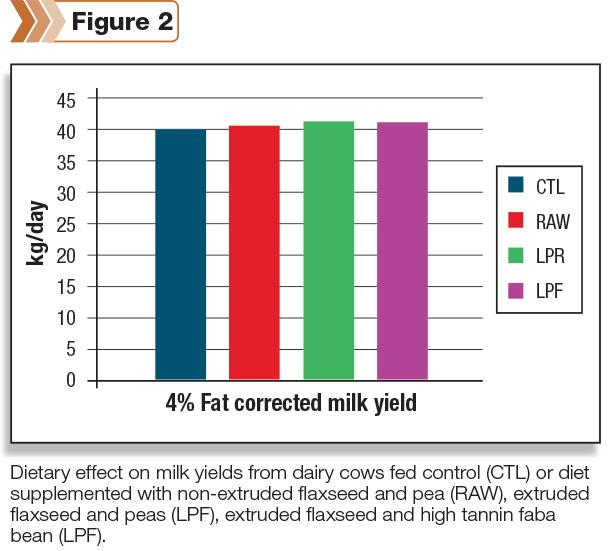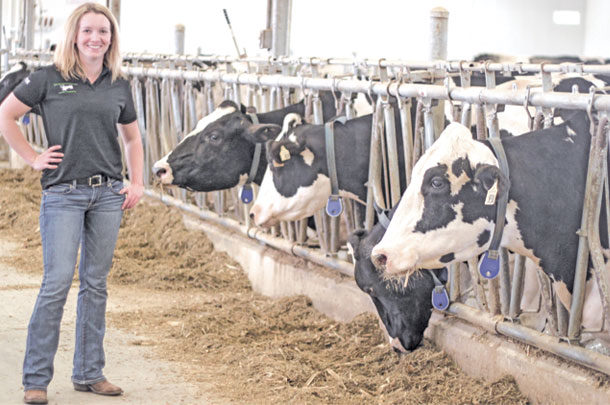The human health benefits of omega-3 fatty acids are well recognized by health professionals and consumers. These fatty acids have been suggested to improve cardiovascular health, reduce inflammation and protect against certain forms of cancer.
Unfortunately, the diet of most North Americans is lacking in these important nutrients. This is a problem that has been linked to the increased incidences of obesity and chronic inflammatory diseases plaguing Western society. Therefore, increasing consumer access to these nutrients could contribute to the prevention of serious human disease.
As a master’s degree candidate at the University of Saskatchewan, I am attempting to address this issue by increasing the concentration of healthy fats in cows’ milk through supplementation of the diet with flaxseed.
This research is a collaborative effort between the University of Saskatchewan and an animal feed company, with additional funding through the Industrial Research Assistance Program and SaskMilk.
Along with my program supervisors, Dr. David Christensen and Dr. Timothy Mutsvangwa, I hope this research will lead to a practical and economically feasible strategy for the production of omega-3 dairy products.
Feeding flaxseed to cattle – or any form of unsaturated fat – is complex due to the nature of the animal’s digestive system. The fat must be in a protected form to prevent digestive disturbances in the rumen; however, it must also be in a form easily digested in the small intestine so the fats can be incorporated into the milk.
Extrusion processing is a heat treatment that can be applied to oilseeds and has been suggested to provide some protection of the unsaturated fats from the rumen environment. Other approaches include the use of whole oilseeds or the addition of tannins to the diet.
These are just some examples of strategies that may increase the rumen outflow of unsaturated fats and improve the fatty acid profile of milk. However, the question relating to how these different forms of flaxseed products compare among one another remains.
My research was conducted at the University of Saskatchewan’s Rayner Dairy Research and Teaching Facility in Saskatoon, Saskatchewan, using unprocessed and extruded flaxseed products as the main omega-3 source in the animals’ diets.
The flaxseed products were provided by an animal feed company and included an unprocessed flaxseed and pea product, an extruded flaxseed and pea product, and an extruded flaxseed and high-tannin faba bean product. Cows were offered either a control diet with no flaxseed or a diet supplemented with one of the three above-mentioned flaxseed products.
The results show the fatty acid composition of the milk was dramatically altered among the flaxseed treatments (Table 1). Most commercial milkfat in Canada contains only 0.5 percent total omega-3 fatty acids. Our trial was able to achieve levels as high as 1.18 percent of total omega-3s in the milkfat simply by feeding cows extruded flaxseed.
 In addition to the increased levels of omega-3s, we also saw a threefold increase in another human health-related fatty acid, conjugated linoleic acid (CLA), as well as a decrease in the level of saturated fatty acids.
In addition to the increased levels of omega-3s, we also saw a threefold increase in another human health-related fatty acid, conjugated linoleic acid (CLA), as well as a decrease in the level of saturated fatty acids.
Although feeding unsaturated fats, such as those found in flaxseed, may improve milk for consumers, we must also consider the impact these feeding strategies may have on the cow. For this reason, we examined the effect these flaxseed products had on dry matter intake, milk yield, milk composition and rumen fermentation characteristics.
Dry matter intake was similar among all treatments with an average of 24.5 kg per day (Figure 1). Fat-corrected milk yield was maintained among treatments with an average of 40.5 kg per day (Figure 2), and milk components were unaffected.

 Rumen fermentation characteristics were also evaluated with no observed differences between treatments. This suggests feeding the extruded flaxseed products was effective in increasing healthy lipids without compromising animal performance.
Rumen fermentation characteristics were also evaluated with no observed differences between treatments. This suggests feeding the extruded flaxseed products was effective in increasing healthy lipids without compromising animal performance.
Other research has suggested the benefits of feeding flaxseed to cattle go beyond improving the nutritional value of milk. Supplementing the diet with flaxseed has been suggested to improve early embryo survival and potentially improve reproductive performance of the herd.
Dairy rations supplemented with flaxseed may also be beneficial to the animals’ immune status and protect against heat stress.
The successful supplementation of flaxseed in a cow’s diet appears to largely depend on the form in which it is fed. Based on our findings, I believe extrusion processing of flaxseeds is an effective strategy as it also presents benefits to producers in terms of product handling.
Unprocessed flaxseed is poorly digested by the animal, and rolled flaxseed may be difficult for producers to store and handle; therefore, extrusion appears to be a suitable alternative.
Feeding extruded flaxseed products to dairy cattle has the potential to improve the health of the animal while simultaneously improving the nutritional value of milk for consumers.
This farm-to-fork connection is extremely relevant at a time when the health of our farm animals and the quality of our food are of utmost importance to both producers and consumers.
Based on this information, there appears to be real opportunity for the addition of omega-3s and other healthy fatty acids to the already nutrient-dense profile of milk. PD
Originally from Regina Saskatchewan, Janna Moats grew up on a mixed farm and obtained a bachelor’s degree in agriculture at the University of Saskatchewan in 2012.
She worked in the feed industry for two years before returning to pursue a graduate-level education. Moats presented these findings in July at the American Dairy Science Association’s Joint Annual Meeting in Orlando, Florida.
References omitted due to space but are available upon request. Click here to email an editor.
PHOTO: Janna Moats at the University of Saskatchewan’s Rayner Dairy Research and Teaching Facility, Saskatoon, Saskatchewan. Photo by Ashlee Boehm.









